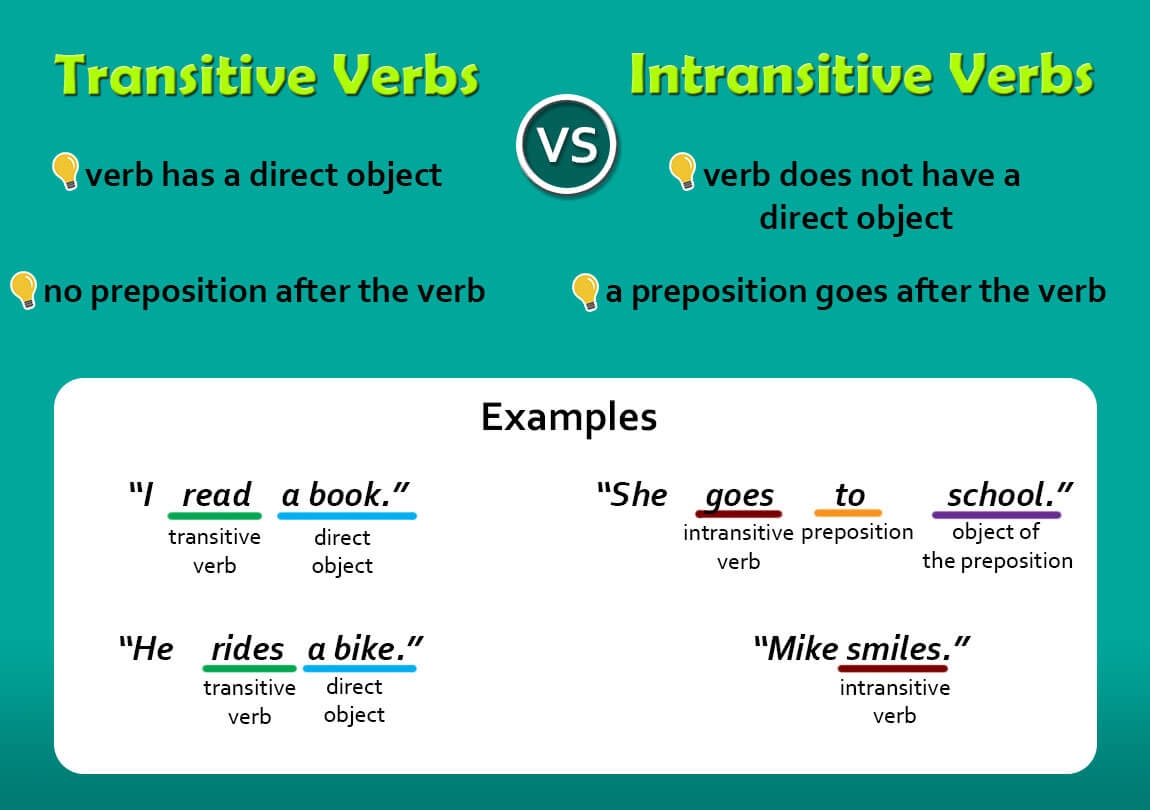Understanding the difference between transitive and intransitive verbs is essential in mastering the English language. Transitive verbs require a direct object to complete their meaning, while intransitive verbs do not. By recognizing and using these verbs correctly, you can improve your writing and communication skills significantly.
Transitive and intransitive verbs play a crucial role in sentence structure and grammar. Knowing when to use each type of verb can help you convey your thoughts more effectively and accurately. Let’s explore some examples of transitive and intransitive verbs to deepen your understanding.
Examples of Transitive and Intransitive Verbs
1. Transitive Verb Examples:
– She ate the delicious cake. (ate – verb, cake – direct object)
– He wrote a heartfelt letter. (wrote – verb, letter – direct object)
– The teacher explained the lesson clearly. (explained – verb, lesson – direct object)
2. Intransitive Verb Examples:
– The birds sing beautifully in the morning. (sing – verb)
– The children laughed loudly at the funny joke. (laughed – verb)
– The sun shines brightly in the sky. (shines – verb)
Transitive verbs require a direct object to complete their meaning, while intransitive verbs do not. For example, in the sentence “She ate,” the verb “ate” requires a direct object (the delicious cake) to make sense. On the other hand, in the sentence “The birds sing,” the verb “sing” does not need a direct object to convey its meaning.
Understanding the distinction between transitive and intransitive verbs can help you construct clear and concise sentences. By identifying the verb type and its relationship to the rest of the sentence, you can enhance your writing skills and communicate more effectively with others.
In conclusion, mastering transitive and intransitive verbs is vital for improving your grammar and language proficiency. By practicing with various examples and applying the correct verb type in your writing, you can enhance your communication skills and convey your message clearly. Remember to pay attention to the verbs in your sentences and determine whether they are transitive or intransitive to ensure accurate and effective communication.
